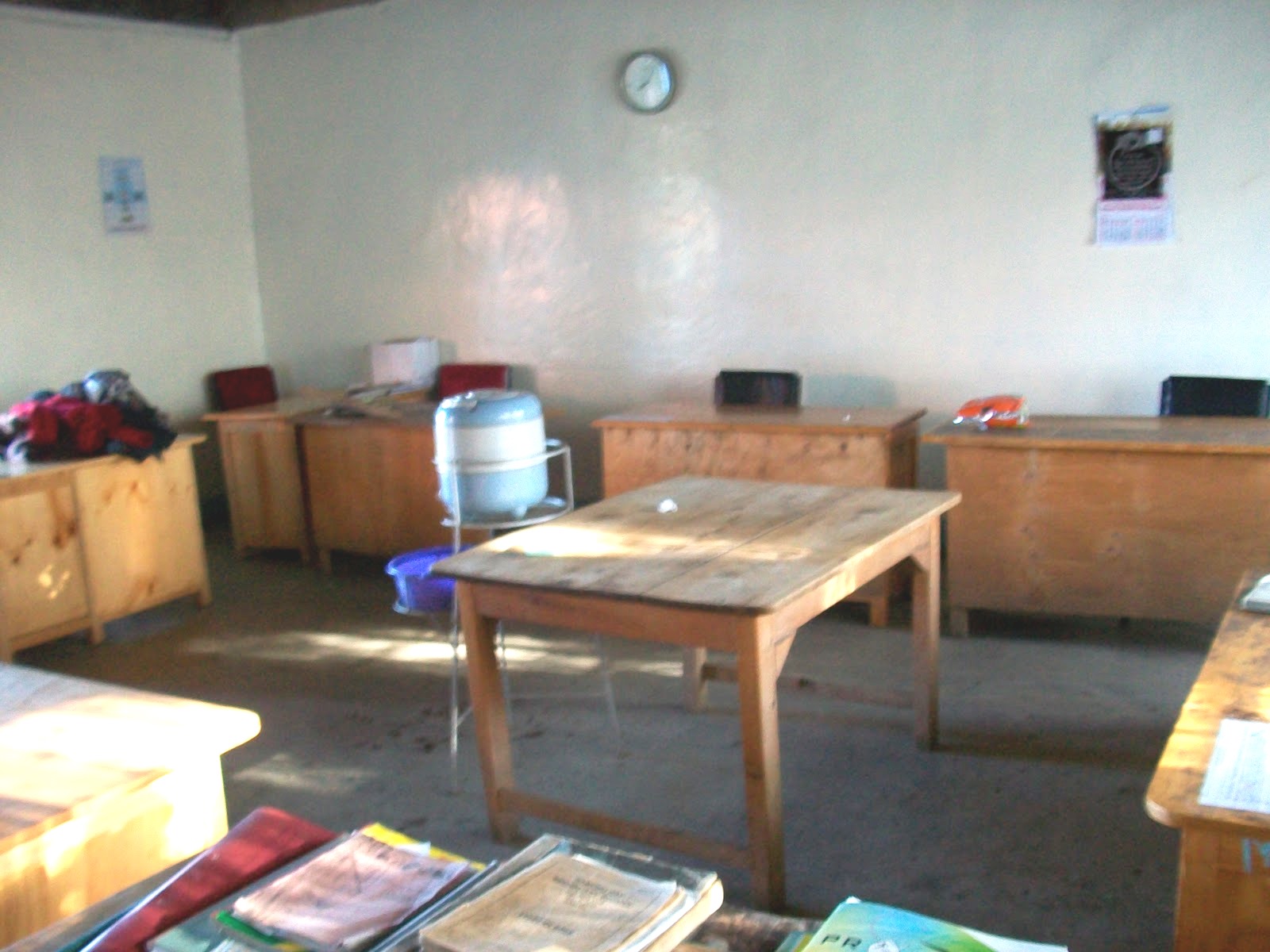The staffroom is more than a resting place — it is the living heart of every school. Within its walls, teachers share more than tea and conversation; they share values, experiences, frustrations, and dreams. It is here that ideas are born, characters are refined, and the culture of the teaching profession is continuously moulded.
Every teacher carries a unique personality shaped by background, training, and experience. The staffroom unites these differences into a common purpose. It is where teachers of diverse temperaments meet — the calm and the fiery, the young and the experienced, the ambitious and the reflective. In this blend of personalities, the staffroom becomes a silent classroom that teaches cooperation, patience, humility, and empathy.
Teachers with excesses or queer characters get refined in the staffroom. The talkative learn to listen, the proud learn humility, and the timid find their voice. Through friendly debates, jokes, and collegial corrections, rough edges are softened and personalities are polished. It is in these day-to-day interactions that character transformation quietly takes place, shaping better professionals and more understanding human beings.
The staffroom also serves as a nurturing ground for growth. Young teachers are mentored by their seasoned colleagues who guide them on matters of discipline, teaching methodology, and moral conduct. Veteran teachers share lessons drawn from years of experience — stories that inspire, caution, and strengthen the newcomers. This mentorship ensures continuity of professional excellence and sustains the noble traditions of the teaching profession.
Case Study: Peter Otieno – Staffroom Mentorship in Action
At Greenfield Secondary School, a young teacher named Peter Otieno had just completed his training and was posted to teach Mathematics. Peter was technically skilled but struggled with classroom management. He often lost his temper when students failed to follow instructions, causing tension in his classes and lowering student morale.
ALSO READ:
KeMU VC urges graduates to embrace innovation, AI Tech-driven World to have meaningful impact
The Staffroom Intervention:
Peter’s struggles did not go unnoticed. In the staffroom, Mr. Kamau, a senior mathematics teacher with over 20 years of experience, observed Peter’s challenges. Instead of reprimanding him publicly, Mr. Kamau invited Peter to the staffroom for informal mentoring sessions.
Over several weeks, Peter learned how to:
Manage disruptive behavior calmly without losing his temper, Organize lessons to be engaging and interactive, Communicate with students in a way that fosters respect rather than fear, and Collaborate with colleagues to share teaching strategies and resources
The staffroom provided Peter with a safe space to reflect on his experiences, ask questions, and receive constructive feedback. Senior teachers also shared personal stories of challenges they faced when starting their careers, which helped Peter feel less isolated and more motivated.
Outcome:
Within two terms, Peter had transformed significantly. His classroom management improved, student engagement increased, and he began to mentor new teachers himself. The staffroom had acted as both a classroom for professional development and a moral support system, reinforcing positive habits and professional growth.
Conclusion from the Case:
Peter’s experience demonstrates that the staffroom is not merely a social space; it is a powerful platform for character formation, mentorship, and professional excellence. Without it, young teachers like Peter might struggle in isolation, potentially leading to burnout or ineffective teaching.
Beyond personal growth, the staffroom is a centre for serious professional and intellectual engagement. Very serious deliberations are reached out in the staffroom, often shaping the policies and practices that define a school’s success. Teachers discuss learners’ progress, classroom challenges, discipline issues, and emerging educational trends. Ideas are exhaustively synchronized and agreed upon, ensuring that collective decisions reflect unity, wisdom, and shared responsibility.
But the staffroom’s influence extends beyond the boundaries of the school. Teachers analyse political statements, politicians, and decide who should lead them. It is often in the staffroom that educators interpret national issues, weigh leadership qualities, and assess the direction in which the country is headed. As shapers of young minds, teachers take a keen interest in governance and policy. Their discussions, often spirited but grounded in reason, help cultivate civic awareness and critical thinking. Through such engagements, teachers refine their own political maturity and reaffirm their role as opinion leaders in society.
At times, the real mirror of maladministration is analysed here. Teachers openly evaluate school leadership, institutional challenges, and administrative policies. The staffroom becomes a space of constructive criticism where issues are laid bare, and honest reflections are made. It is here that the courage to question and the wisdom to correct are exercised with responsibility and professionalism. The goal is never rebellion, but reform — guided by the shared desire to make the school a better place for both teachers and learners.
When Administrators Collapse Staffrooms
In recent times, some administrators have made a worrying decision — collapsing staffrooms altogether. They argue that teachers should only converge in the staffroom during the lunch break and spend the rest of their time in classrooms or at the back of other teachers’ lessons. In such schools, teachers without active lessons sit quietly behind classrooms, often disrupting the learning environment or enduring awkward silence.
KCSE examination at week two – the critical moment that demands uncompromising vigilance
This practice, though presented as a measure of efficiency or learner supervision, silently erodes the professional identity and unity of teachers. The staffroom, once a sacred hub of dialogue and mentorship, is reduced to a transient tea spot. Teachers lose their shared space for planning, reflection, and emotional renewal. The collegial bond that sustains morale weakens, and the sense of belonging fades.
A teacher confined to the classroom corridor cannot freely discuss sensitive issues, share professional ideas, or decompress after a tough lesson. The absence of a vibrant staffroom denies teachers the opportunity to refine ideas, settle disputes, or counsel one another privately. It is a quiet form of professional isolation — one that diminishes morale, breeds fatigue, and undermines the school’s collective spirit.
Administrators who collapse staffrooms may unknowingly cripple the soul of their institutions. A school without an active staffroom becomes mechanical — efficient perhaps, but devoid of human warmth. The laughter, mentorship, debate, and moral reflection that define a true teaching community vanish, leaving behind a culture of silence and compliance.
Without Staffrooms: The Missing Heart of the School
Imagine a school without a staffroom — a place where teachers only meet in classrooms, corridors, or assembly grounds, each moving alone like an island. The heart of the school would fall silent. The sense of unity, laughter, debate, and reflection that flows from the staffroom would simply disappear.
Without staffrooms, teachers would lose their central meeting point, the very hub where teamwork is born and sustained. Communication would become fragmented, and coordination among teachers would weaken. Important deliberations about learners, discipline, and teaching strategies would either be delayed or never take place. The school would operate like a machine with missing gears — functioning, perhaps, but never smoothly.
The absence of a staffroom would also mean the death of mentorship. Young teachers would have nowhere to seek daily advice from seasoned colleagues. The informal guidance, moral correction, and professional coaching that happen naturally in staffrooms would vanish. New teachers would struggle alone, repeating avoidable mistakes and feeling isolated within the very institutions meant to nurture them.
ALSO READ:
KCSE examination at week two – the critical moment that demands uncompromising vigilance
Moreover, the school’s intellectual and emotional balance would be lost. The staffroom is where teachers release tension after a difficult lesson, share jokes to lift weary spirits, and draw encouragement from one another. Without that emotional cushion, stress and burnout would rise sharply. Teachers would become mechanical — teaching, marking, and going home — without ever feeling the warmth of collegial support.
Decision-making would suffer too. The staffroom is the unofficial parliament of the school. It is where teachers debate, reconcile opinions, and reach consensus on key matters. Without it, decisions would be made in isolation, leading to misunderstanding, disunity, and mistrust. The collaborative spirit that makes schools thrive would fade away.
Even learners would feel the absence indirectly. Teachers who lack a space for dialogue and moral renewal may become withdrawn or easily irritable. The mentorship culture that flows from a healthy staffroom environment would be lost, and learners would miss out on the ripple effect of wisdom and teamwork that teachers naturally project when they are united.
Above all, without staffrooms, schools would lose their moral compass. The space where character is shaped, discipline discussed, and integrity reinforced would vanish. Teachers would have fewer opportunities for self-evaluation and constructive criticism. The noble profession would risk drifting into isolation — efficient in function, but poor in spirit.
In essence, a school without a staffroom would be like a body without a heartbeat. Lessons might still go on, bells might still ring, and reports might still be written — but the soul of the institution would be missing. The staffroom is not just a room; it is the living nerve of the school, the invisible bond that keeps the teaching family together.
The staffroom stands as a sacred space of transformation — a quiet forge where teachers’ characters are moulded, their spirits renewed, and their unity strengthened. It nurtures wisdom, mentorship, and moral courage. It refines the teachers who, in turn, refine the nation.
Though it may not appear on the school timetable, the staffroom remains the most important class of all — a timeless workshop where teachers themselves are taught, corrected, and inspired to uphold the dignity and nobility of their calling.
By Hillary Muhalya
You can also follow our social media pages on Twitter: Education News KE and Facebook: Education News Newspaper for timely updates.
>>> Click here to stay up-to-date with trending regional stories
>>> Click here to read more informed opinions on the country’s education landscape






